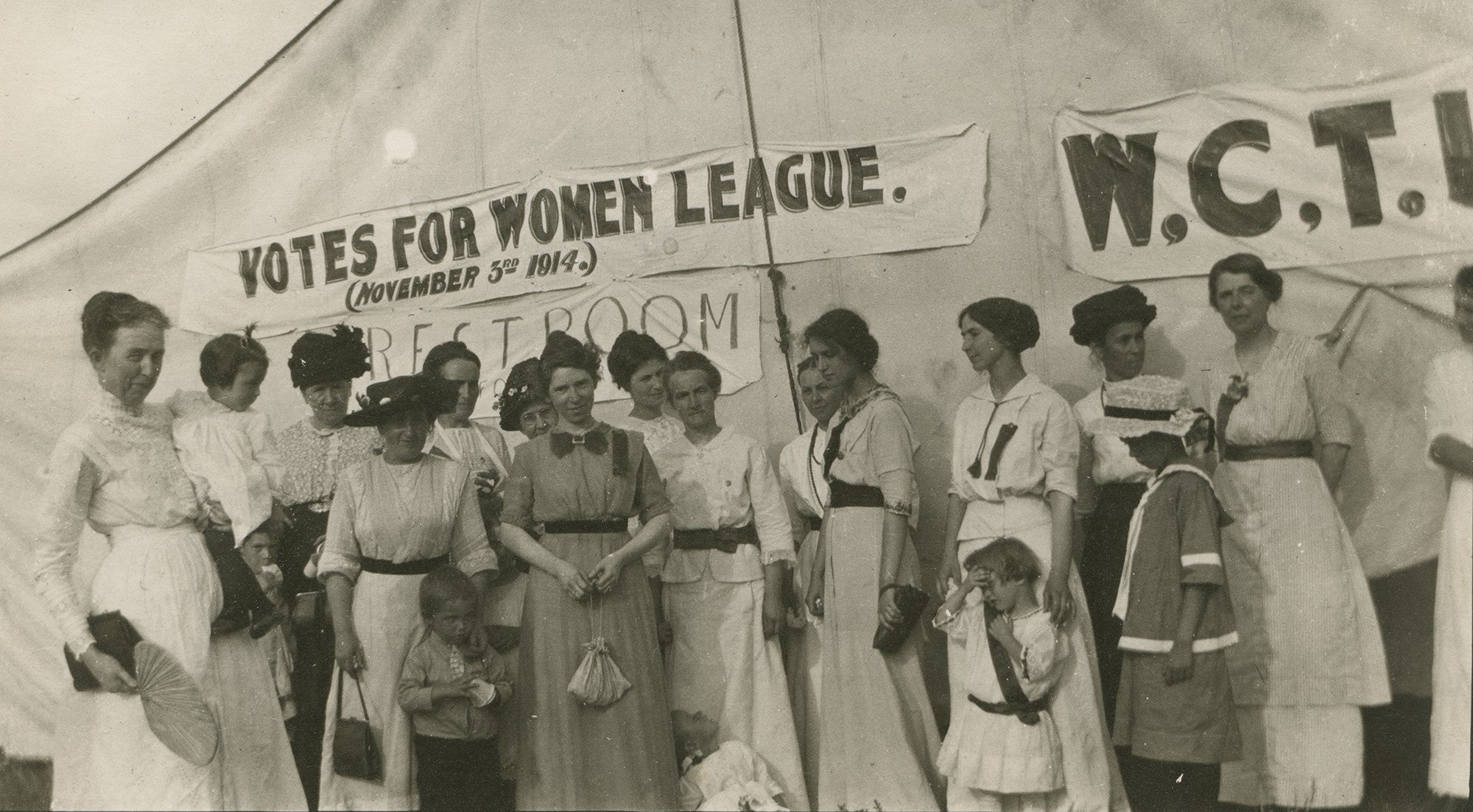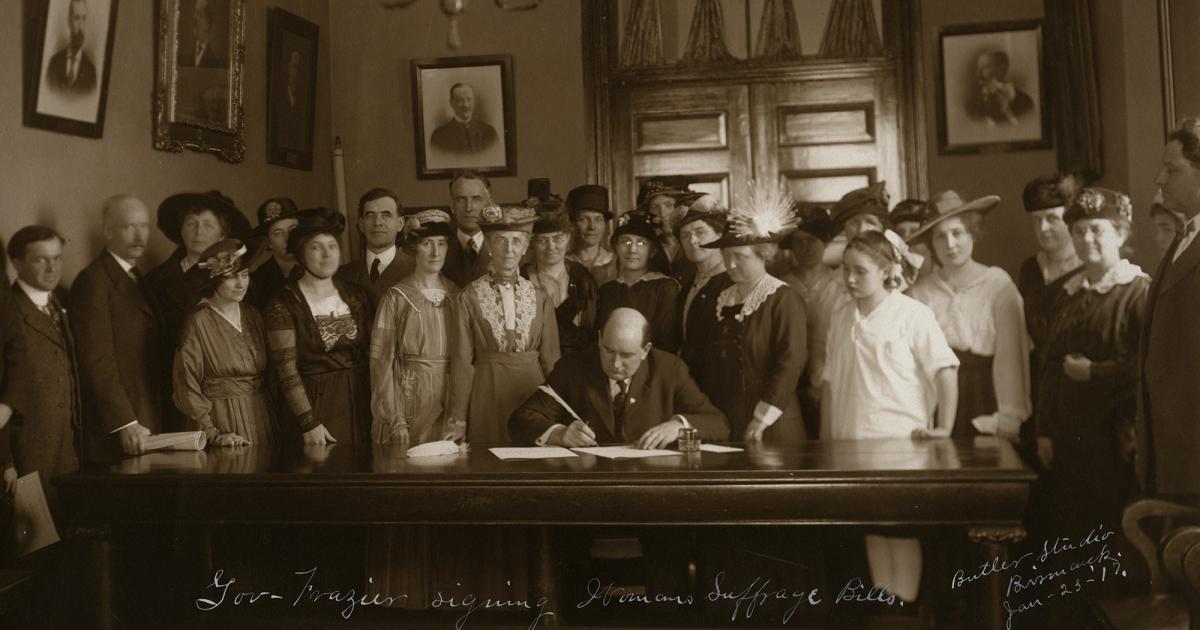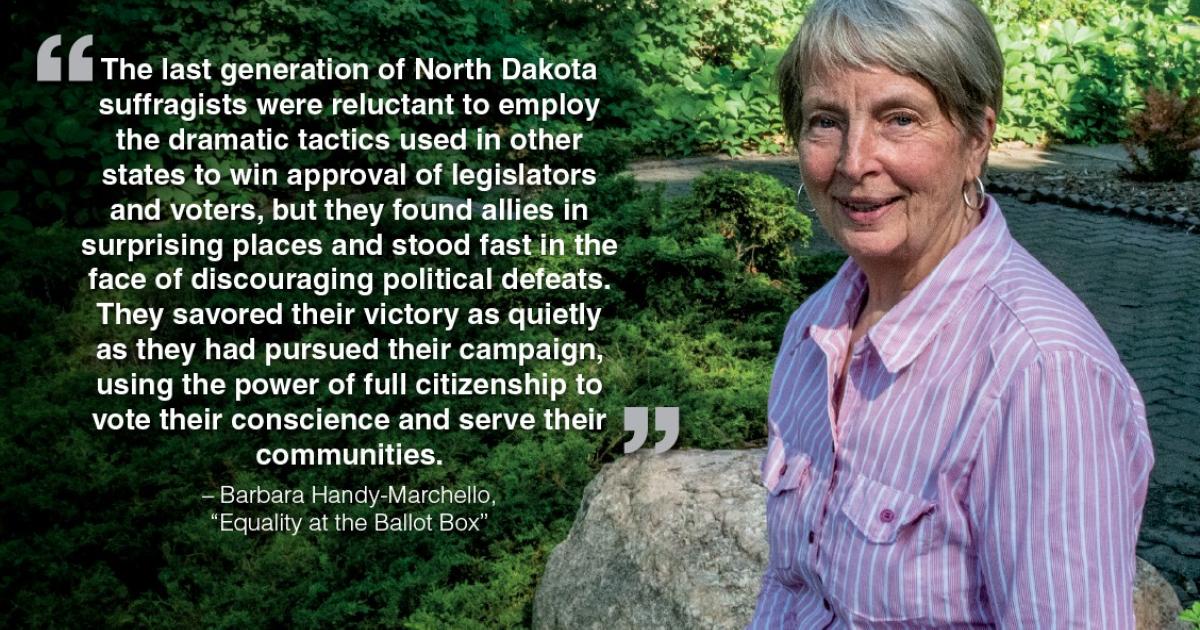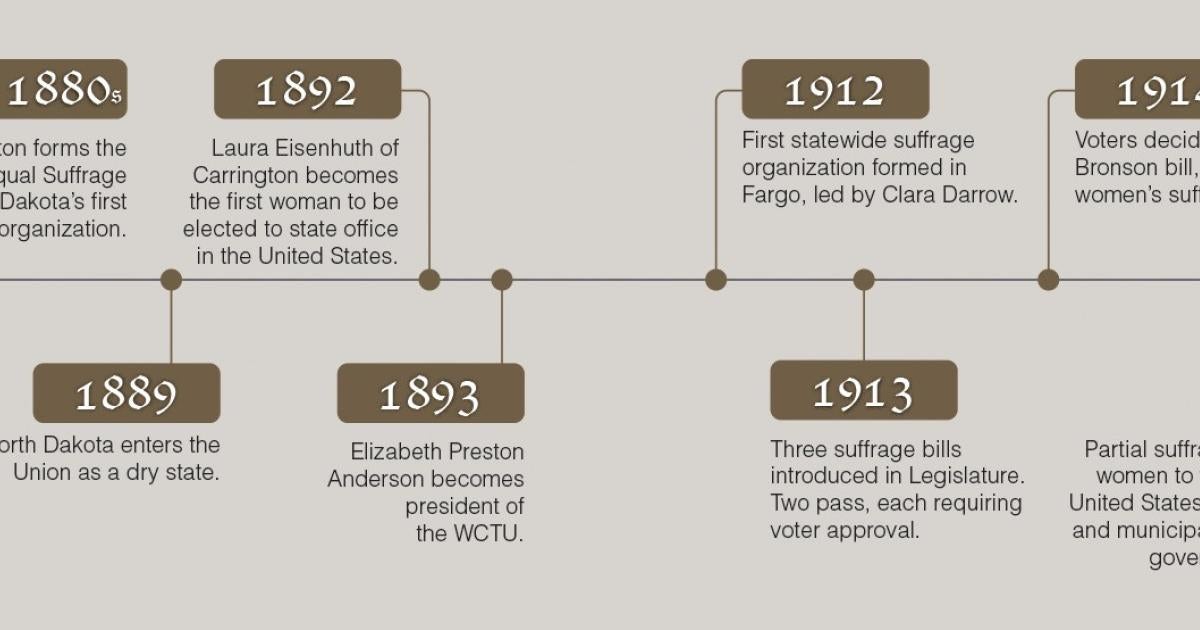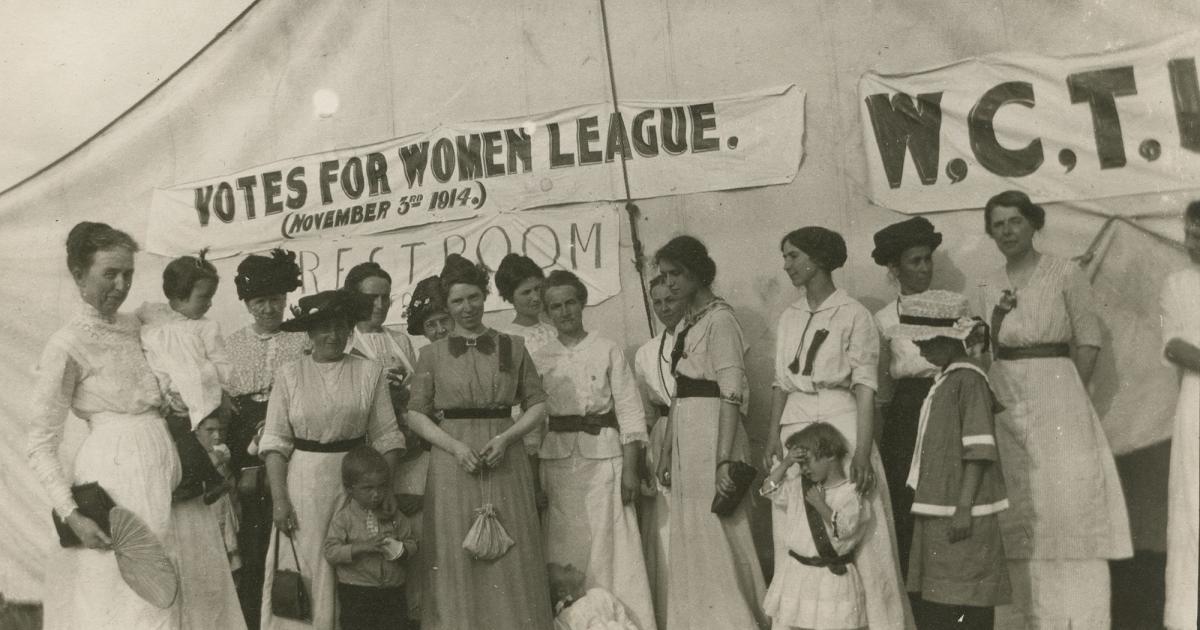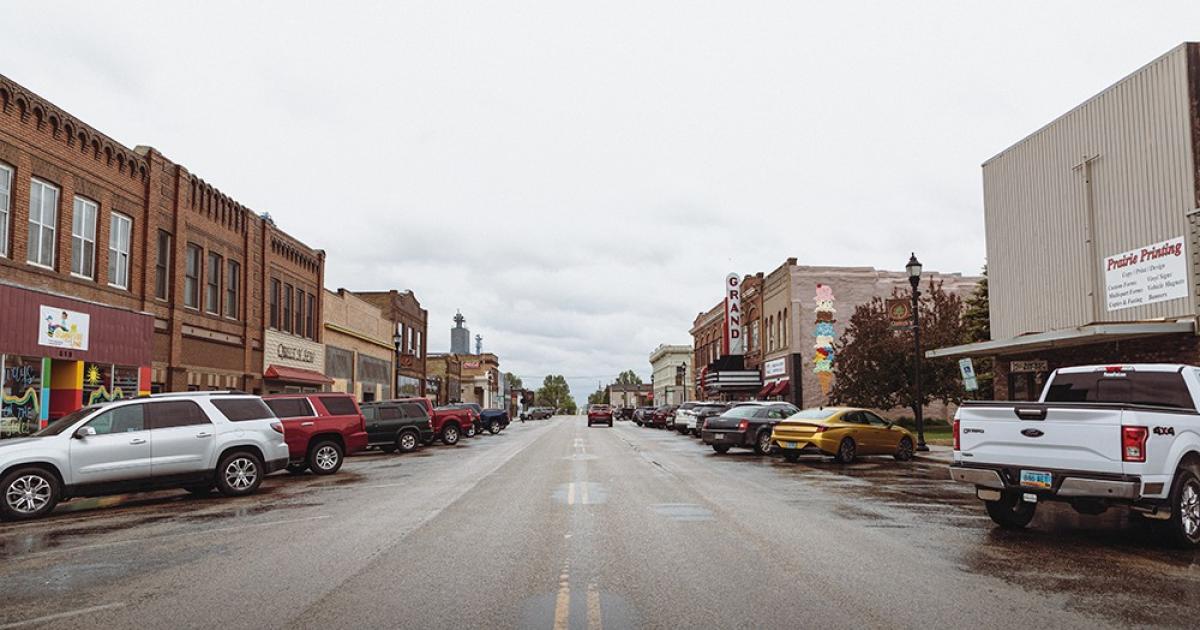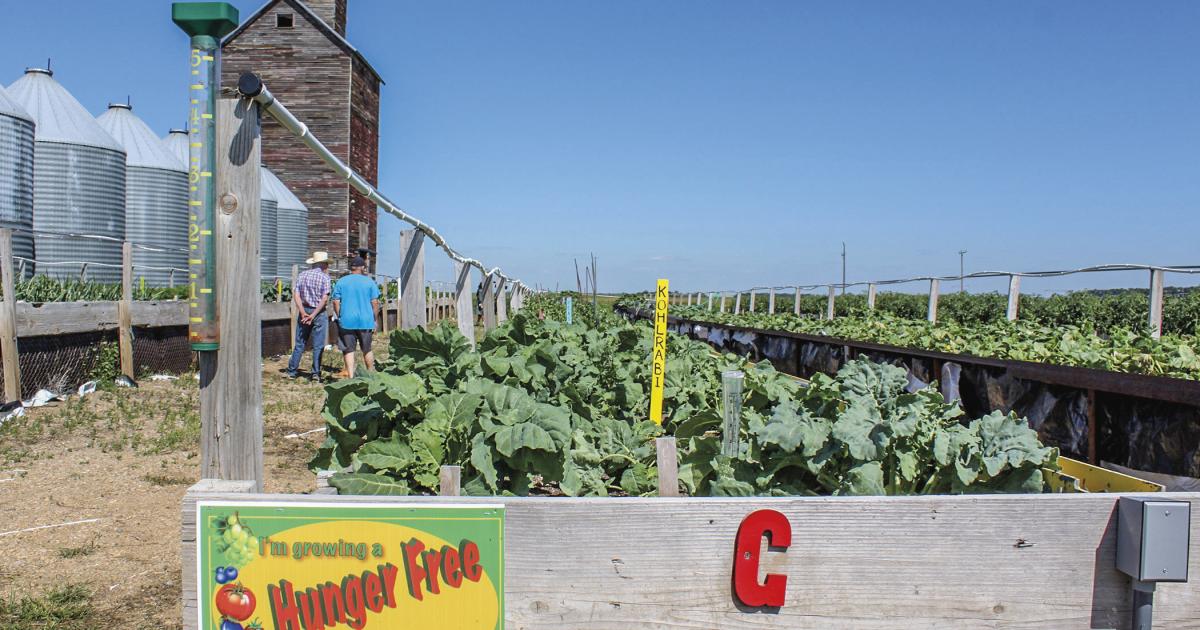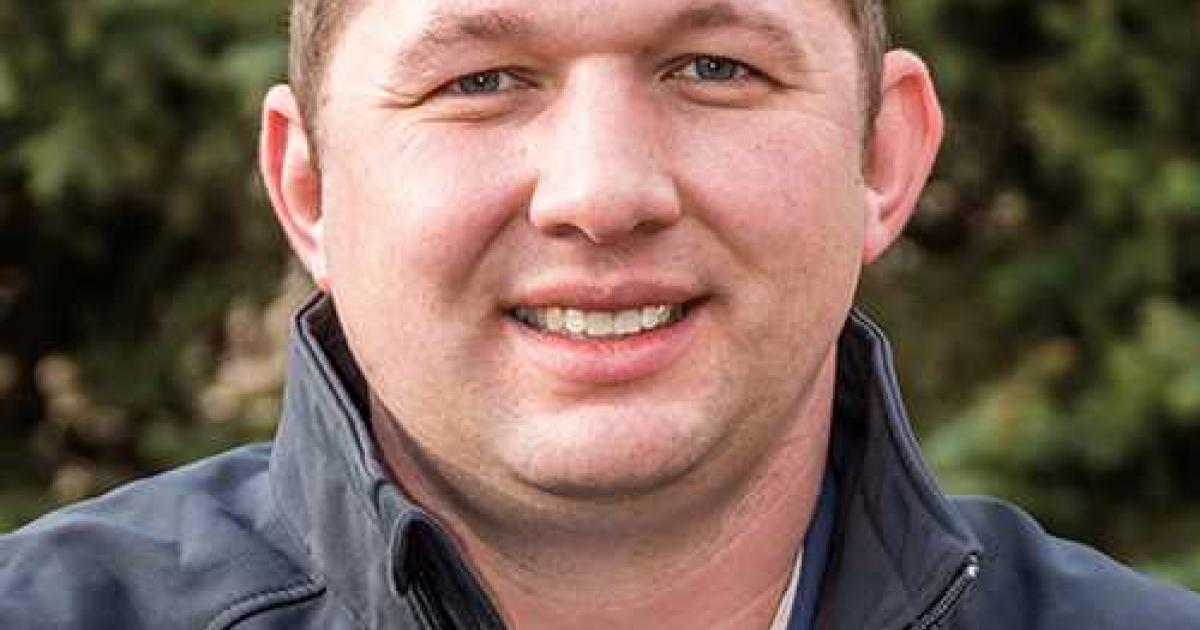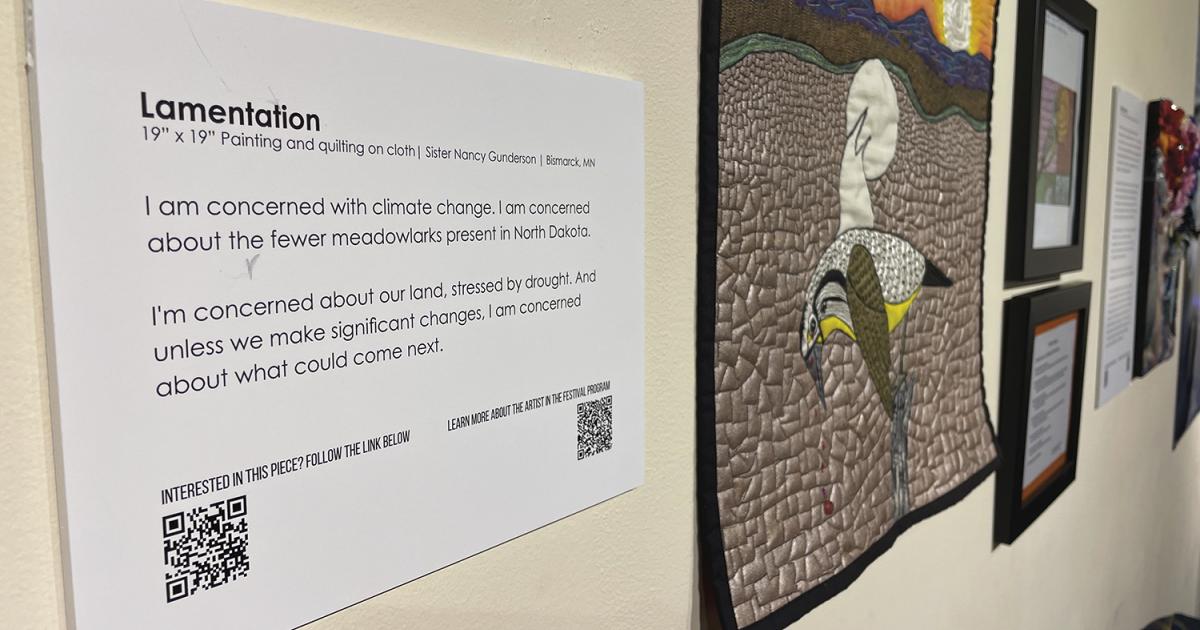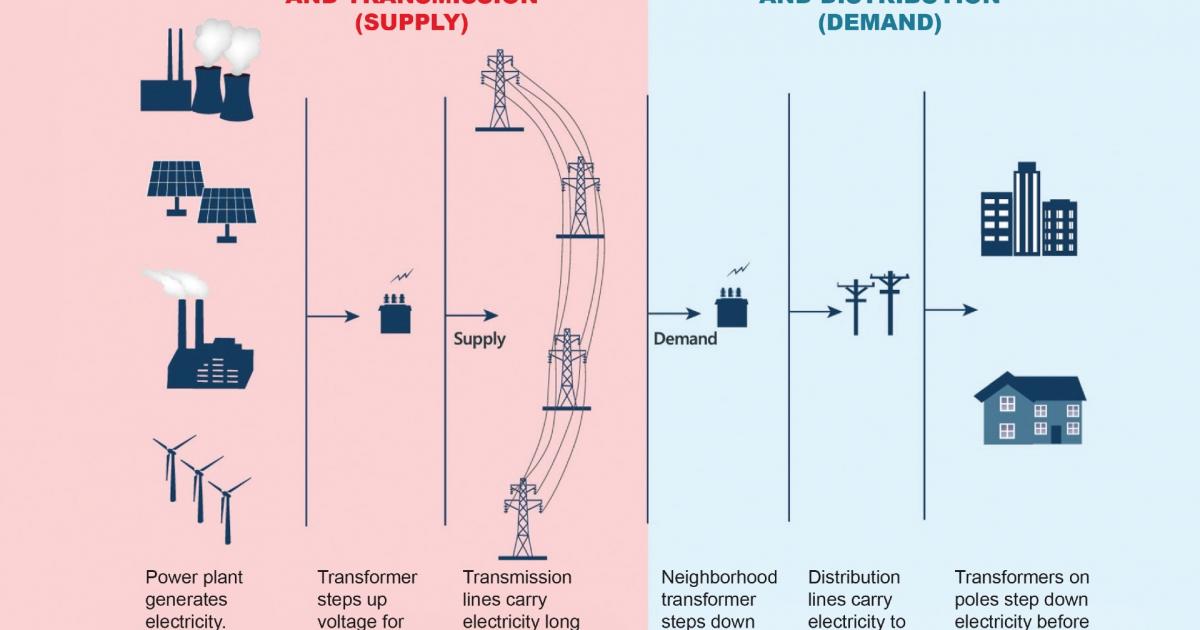Liess Vantine can picture it clearly – three images neatly hanging above the breakfast table in his grandmother’s Bismarck kitchen. At center, a campaign poster of Lynn J. Frazier, the first Nonpartisan League governor of North Dakota. Portraits of suffragists Elizabeth Cady Stanton and Frances Willard flanked each side. Vantine’s grandmother, Viola Liessman, was hardly subtle in her decoration, nor in her support for women’s suffrage.
Gov. Lynn Frazier signs the 1917 women's suffrage bill, allowing women to vote for president of the United States and a variety of county and municipal offices, but not for governor or legislative seats. STATE HISTORICAL SOCIETY OF NORTH DAKOTA, CO278-00001
She, like many engaged in the Woman’s Christian Temperance Union (WCTU), supported women’s right to vote, about as much as she favored prohibition. It was due, in part, to both these lesser-known suffragists and suffragist leaders in North Dakota – Dr. Cora Smith Eaton, Elizabeth Preston Anderson, Clara L. Darrow and Linda Slaughter – that the state Legislature swiftly passed the 19th Amendment to the U.S. Constitution, giving women the right to vote upon ratification Aug. 18, 1920.
Yet, the campaign to earn women’s suffrage in North Dakota was bubbling far before 1920, even before North Dakota entered the Union in 1889. Women’s suffrage was paraded loudly amongst social and political circles elsewhere, but not in North Dakota.
“It was a very quiet, low-key movement in North Dakota,” says Barbara Handy-Marchello, a historian and retired University of North Dakota women’s history professor. “It was a very different situation here, partly because its small population, partly because it’s rural.”
While the methods of gaining suffrage for women here on the northern Great Plains took on a hushed tone, the desire to achieve it was anything but quiet. Perhaps illustrated by a line in Preston Anderson’s memoir, she wrote about suffrage being a standing joke in the Legislature by the 1893 assembly with a healthy dose of zing: “When any question especially obnoxious or ludicrous comes up, there is usually some member, who is not burdened by the amount of brain he carries with him, ready to arise and move to refer the matter to the woman suffrage committee.”
PROHIBITION AND SUFFRAGE
The position of women in North Dakota society at the time of statehood was better than other states.
“North Dakota was pretty generous to women when they became a state,” Handy-Marchello says.
Here, women could homestead in their own name, and their right to property was well-ingrained into the legal and economic systems of the time, Handy-Marchello says. Women’s rights were also advanced in the case of rape and the right to divorce.
“At one point, there were nine causes for which a woman could secure a divorce and have a right to property. And yet, the right to vote was considered a huge ask,” she says. “Women are running farms, paying taxes, managing churches, and yet, they have no political voice.”
In fact, the Dakotas had the opportunity to be the first to grant full women’s suffrage, with Enos Stutsman’s 1868 introduction of a women’s suffrage bill in the Dakota Territory Legislature. It passed in the House, but never made it out of the Council after being badly amended, Handy-Marchello says.
Later, a succeeding effort for women’s suffrage in Dakota Territory would be vetoed by Gov. Gilbert Pierce. But in 1883, Dakota Territory made a step toward suffrage by allowing women to vote in school elections. Progress.
By the late 1880s, suffragists began to organize, starting with Smith Eaton in Grand Forks and, later, under the direction of the new WCTU president, Preston Anderson. At the same time, North Dakota entered the Union as a dry state, with prohibition written into its constitution.
“Temperance people have different agendas than suffragist folks, but they know an alliance is necessary,” Handy-Marchello says, as they attempted to hold onto prohibition and keep North Dakota dry.
“Over the next 20 years, prohibition proved to be the most significant influence over the question of woman suffrage,” Handy-Marchello writes about the politics of women’s suffrage in North Dakota, published in the book “Equality at the Ballot Box.” “The WCTU had linked prohibition to suffrage in the public mind.”
WCTU tracts on women’s suffrage are contained in a collection of documents donated by the Liessman family to the State Historical Society of North Dakota. One tract, “Plans for Suffrage Campaign,” laid out state and local WCTU plans to make the suffrage campaign their principal work that year. The plans included establishment of a suffrage campaign committee, advertising, securing the support of the press and the pulpit, development of literature and educational materials, public meetings, letter writing, suffrage parties, picnics and plays. The tract even suggests some very North Dakota ways to fundraise for these suffrage efforts: through donations from businessmen who support suffrage, bazaars, sale of suffrage supplies, rummage sale, sale of baked goods, jellies, pickles, or wearing apparel made by the members.
Another WCTU tract, “Why North Dakota Women Want the Ballot,” lists arguments for granting women’s suffrage, like “women are governed without their consent.” The last argument for suffrage suggests that “woman’s ballot will insure the retention of the prohibitory clause in the constitution of this state.”
THE ROAD TO RATIFICATION
By 1912, the first statewide suffrage organization had formed in Fargo, led by Darrow, and the larger towns all had Votes for Women Leagues, Handy-Marchello says. The momentum was there, enough to support the introduction of three suffrage bills in the 1913 Legislature. Ultimately, the Legislature approved two of these bills, both requiring voter approval and one also requiring 1915 legislative approval.
The H.A. Bronson bill, which suffragists understood “was the least likely path to success” according to “Equality at the Ballot Box,” would go to the voters as a referred measure in November 1914. The difficulty was that suffrage would have to be approved by a majority of all the voters voting at the election, including those who did not vote on that issue. Preston Anderson thought it impossible.
“It doesn’t pass,” Handy-Marchello says. “The numbers are amazing – more people voted on the suffrage measure than for governor. If they didn’t count the non-votes, it would have passed by 12,000 votes.”
“The 1914 vote is the signal that says, ‘Pay attention to politics,’” she says.
The next opening for suffrage occurs with the Nonpartisan League’s takeover of the Legislature in 1917. A partial suffrage bill is introduced Jan. 16, 1917.
“It quickly passed both houses, and after a day’s delay caused by a blizzard, Governor Frazier signed it on 23 January. At last, the women of North Dakota could vote for president of the United States and a variety of county and municipal offices. They could not vote for legislators or governor, but the national suffrage bill was on the horizon,” Handy-Marchello explains in “Equality at the Ballot Box.”
Two years later, Congress passed the women’s suffrage amendment to the U.S. Constitution. North Dakota became the 20th state to ratify the amendment on Dec. 1, 1919. Women would have to wait eight more months to finally fulfill their quest for whole suffrage.
In “Equality at the Ballot Box,” Marchello-Handy sums up the fight for women’s suffrage in North Dakota: “The last generation of North Dakota suffragists were reluctant to employ the dramatic tactics used in other states to win approval of legislators and voters, but they found allies in surprising places and stood fast in the face of discouraging political defeats. They savored their victory as quietly as they had pursued their campaign, using the power of full citizenship to vote their conscience and serve their communities.”
THE YEAR 2020
What would those suffragists say today, 100 years after their momentous victory?
Vantine knows his grandmother regarded women’s suffrage as “one of the most important things her life was for,” and might offer this if she could reflect on it today: “There’s a long way to go before we’re finished. And so, go for it.”
“These women were so hard-headed, so practical, so knowledgeable,” Handy-Marchello says. “I think they would say, ‘OK, we opened the door – you better keep on moving through it.’ I think they would say, ‘Do not rest on your laurels – you’ve got a lot of work to do.’ Look at your Legislature. Do you have 50 percent women in the Legislature yet? Have you had a woman governor yet? Have you had a woman president yet?”
She considers the ratification of the 19th Amendment a “steppingstone” in this great experiment called the United States of America. As co-chair of the North Dakota Woman Suffrage Centennial Committee established to commemorate the milestone, she hopes the recognition of the women’s suffrage movement extends beyond 2020.
“I think it’s really important that we think of this centennial celebration as a commemoration of what was done and what is yet to be done,” she says. “This is just refocusing on the future.”
Cally Peterson is editor of North Dakota Living. She can be reached at cpeterson@ndarec.com.


